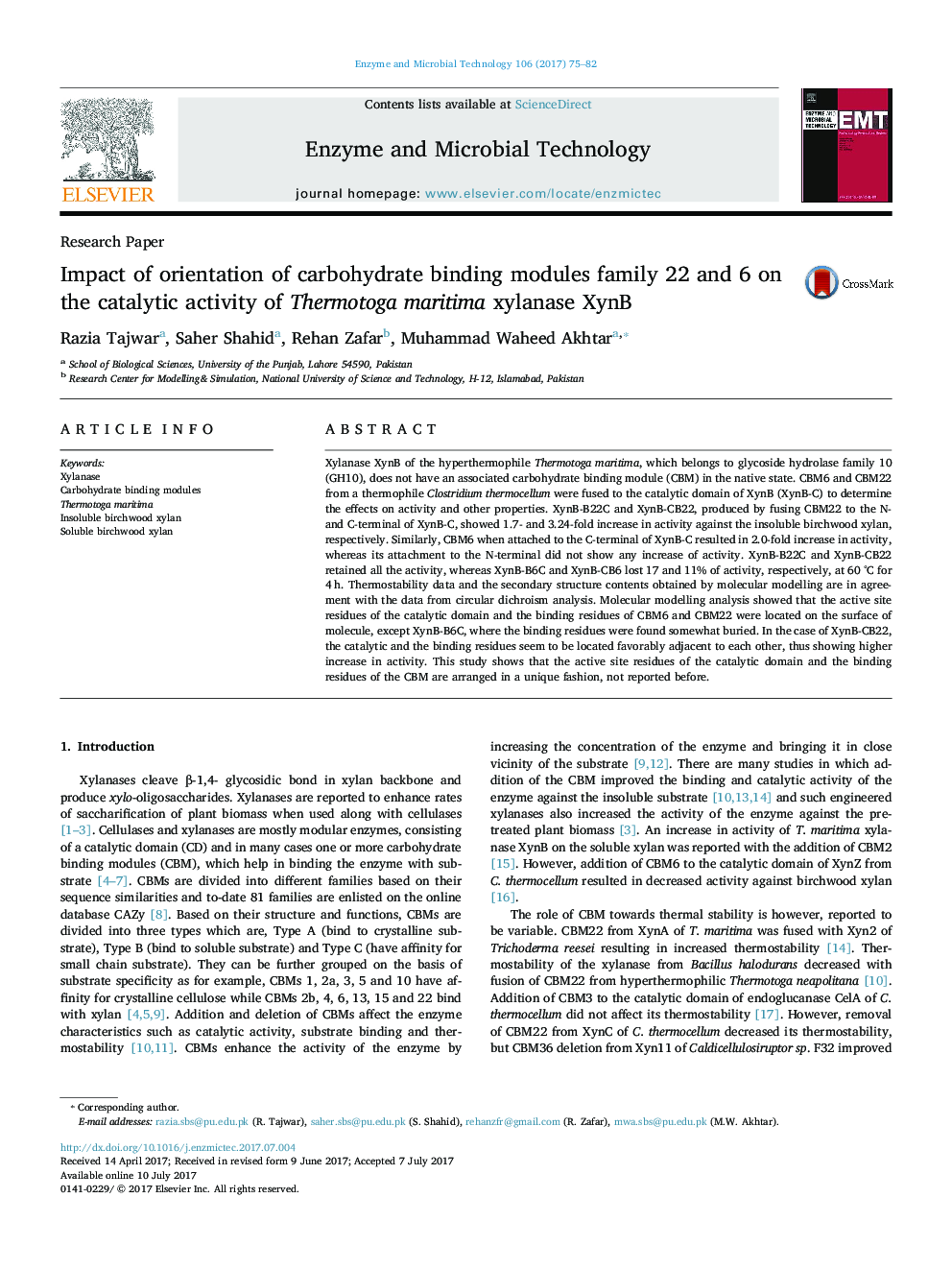| کد مقاله | کد نشریه | سال انتشار | مقاله انگلیسی | نسخه تمام متن |
|---|---|---|---|---|
| 4752720 | 1416365 | 2017 | 8 صفحه PDF | دانلود رایگان |

- CBM6 and CBM22 were fused to the N- and C-terminal of XynB to produce variants XynB-B6C, XynB-CB6, XynB-B22C and XynB-CB22.
- The activity of XynB-CB22 increased 2.76 and 3.24 folds against the soluble and the insoluble xylan, respectively.
- Activities of the variants depend on the unique relative positioning of the CBM binding and the active site residues of the catalytic domain.
Xylanase XynB of the hyperthermophile Thermotoga maritima, which belongs to glycoside hydrolase family 10 (GH10), does not have an associated carbohydrate binding module (CBM) in the native state. CBM6 and CBM22 from a thermophile Clostridium thermocellum were fused to the catalytic domain of XynB (XynB-C) to determine the effects on activity and other properties. XynB-B22C and XynB-CB22, produced by fusing CBM22 to the N- and C-terminal of XynB-C, showed 1.7- and 3.24-fold increase in activity against the insoluble birchwood xylan, respectively. Similarly, CBM6 when attached to the C-terminal of XynB-C resulted in 2.0-fold increase in activity, whereas its attachment to the N-terminal did not show any increase of activity. XynB-B22C and XynB-CB22 retained all the activity, whereas XynB-B6C and XynB-CB6 lost 17 and 11% of activity, respectively, at 60 °C for 4 h. Thermostability data and the secondary structure contents obtained by molecular modelling are in agreement with the data from circular dichroism analysis. Molecular modelling analysis showed that the active site residues of the catalytic domain and the binding residues of CBM6 and CBM22 were located on the surface of molecule, except XynB-B6C, where the binding residues were found somewhat buried. In the case of XynB-CB22, the catalytic and the binding residues seem to be located favorably adjacent to each other, thus showing higher increase in activity. This study shows that the active site residues of the catalytic domain and the binding residues of the CBM are arranged in a unique fashion, not reported before.
Journal: Enzyme and Microbial Technology - Volume 106, November 2017, Pages 75-82